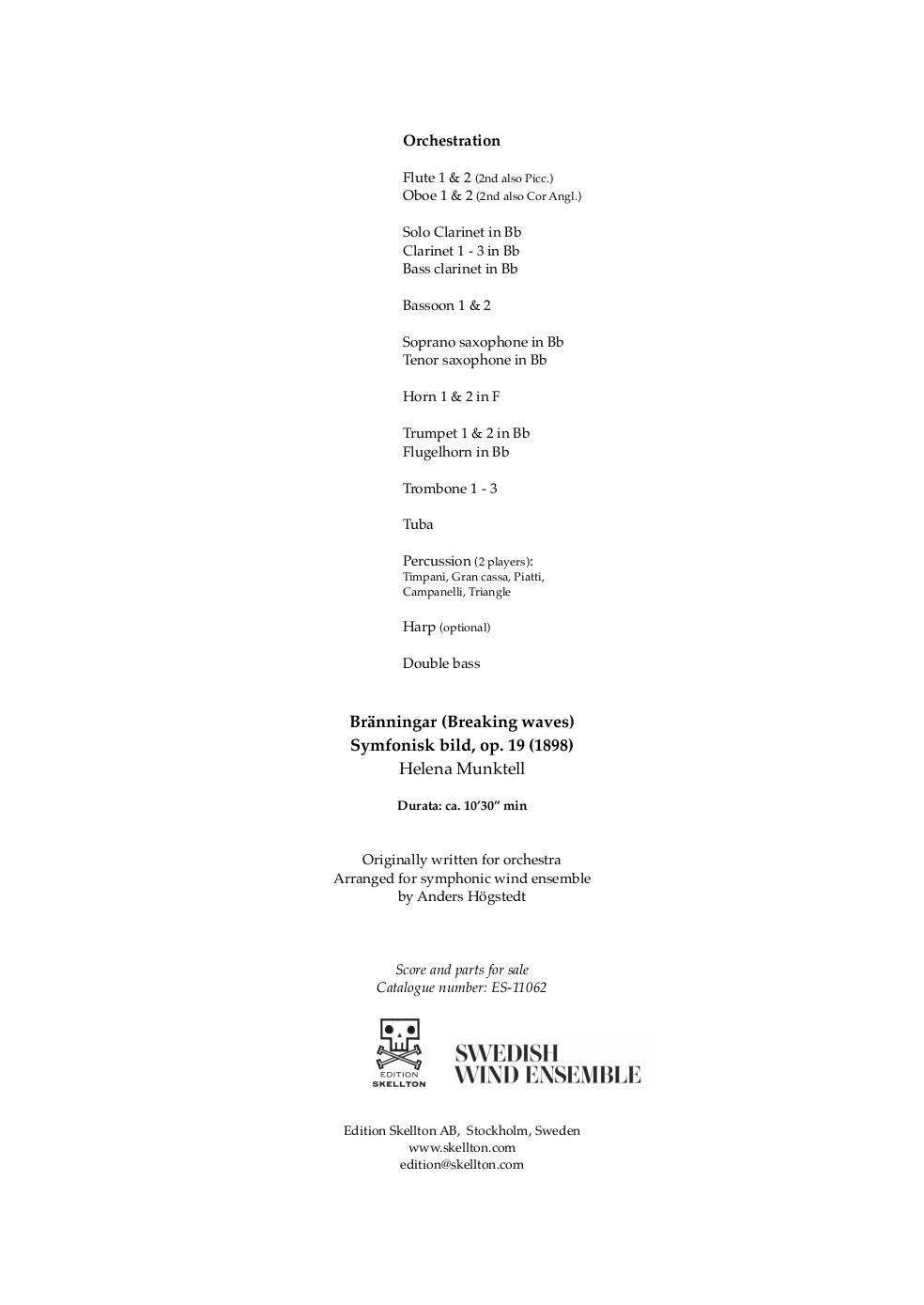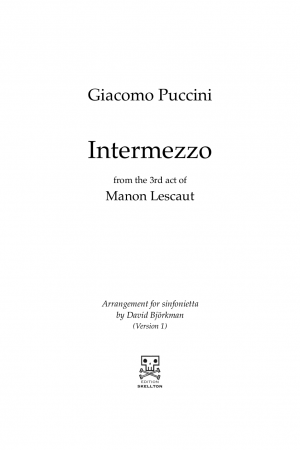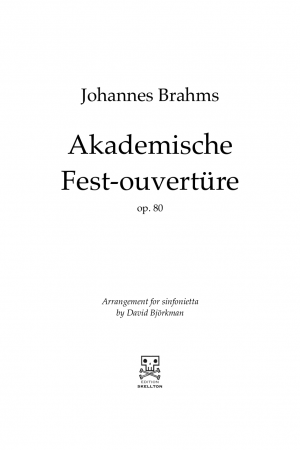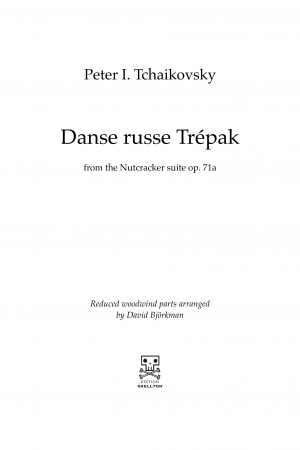On a gloomy November day in 1919, the Swedish music scene converged on the Musikaliska concert hall at Nybrokajen 11, in the heart of Stockholm. As always, the Royal Swedish Academy of Music’s traditional formal gathering was a pres- tigious event, with speeches, prize-giving ceremonies and music. The composer and academy member Helena Munktell had passed away earlier that same year. She was not the first woman to be elected to the academy, which admitted its first female members back in the 18th century. What was unusual was that she was elected solely on her merits as a composer.
Now, in the packed auditorium of the country’s oldest concert hall, the audience waited to hear the Swedish premiere of Munktell’s orchestral work Breaking Waves. This is a symphonic image in which waves swell, break, are forced into the air and fall back, only to return with renewed vigour or, at other times, as a quiet ripple on the surface of the water. Her opus 19, performed in the year 1919.
The Breaking Waves composed by Grycksbo-born Helena Munktell in Monte Carlo in the 1890s came at a time when the waters of musical history were also in full swell. Tonality had reached a breaking point, and composers would soon haveto start looking for something other than just major and minor keys in order to continue their work. This was also a breaking point for female composers. With her orchestral works such as Breaking Waves, Dala Suite and her opera In Florence, Munktell paved the way for women in her role as a composer. Munktell brought her music out from the salon and onto the public stage. Breaking Waves broke new ground!
She stretches the canvas of her symphonic image with a quivering B♭. From here, the movement spills over into the first, slightly abrupt sea motif, which immedi- ately takes up residence in the orchestra, before moving around like a chameleon throughout the work. A Wagnerian aesthetic meets French instrumentation from the start, leading us straight into the more relaxed main theme. This main theme presents itself with the horn section, a punctured rhythm, not unlike that of Richard Wagner’s Ride of the Valkyries. The theme is brief and varies constantly, but always retains the same rhythmic structure.
As the movement then flows along, we encounter a second theme that really only consists of a small chromatic, descending figure. As kaleidoscopic as its sister theme, this figure also insists on behaving differently all the time. The use of motifs is reminiscent of Beethoven, as he too used very small components to build up large, coherent works. Using these three building blocks, Munktell sketches the entire symphonic land- scape in Breaking Waves. She herself never heard the work performed at home in Sweden. However, the Swedish Wind Ensemble has now recorded it in Högstedt’s instrumentation – which is close to Munktell’s own symphonic style – in the same auditorium where it made its Swedish debut back in 1919: Musikaliska.
About the 2021 Swedish Wind Ensemble recording project and collaboration between arranger the Swedish Wind Ensemble, Anders Högstedt and Edition Skellton:
“The Swedish Wind Ensemble recorded these works in the same year that Sweden marked the centenary of women’s voting rights. The recording took place at the Musikaliska concert hall in the heart of Stockholm. The Royal Swedish Academy of Music has convened here for a number of musical and historical events over the years, including the presentation of the first Nobel Prize in 1901. The venue also
saw the first Swedish performance of Helena Munktell’s work Breaking Waves, during the Academy’s formal gathering. She, Elfrida Andrée and Clara Schumann were all members of the Academy. Today, Musikaliska is the home of the Swedish Wind Ensemble, and an important arena for acoustic music.
All the works were specially arranged for the Swedish Wind Ensemble by it’s permanent arranger, Anders Högstedt. The pieces were originally written for a symphony orchestra or piano. But is it appropriate to record music adapted for an ensemble, rather than performing it in its original format? The Swedish Wind Ensemble certainly believes so, with its tradition of bringing music closer to the
people. Today, the Swedish Wind Ensemble continues the tradition of bringing live music closer to the people, and in the anniversary year of universal suffrage it felt natural to showcase compositions by both Swedish and international women. Ever since its ‘Skip the Full Beard’ initiative in 2010, the orchestra has developed, arranged and performed a number of works written by women.
With this recording, we want to share some of our work over the years. In this way, we hope that wind ensembles will be able to perform the repertoire we have arranged, thereby giving even more audiences the opportunity to enjoy this music.”
Printed score: 400 sek (B4 format, 40 pages. Coil bound, frosted plastic front, hardback)
Score in PDF: 320 sek (B4 format, 40 pages)
To add parts to your order, please click here:
Printed parts: à 50 kr (B4 format. 3-4 pages, Munken paper)
Parts in PDF: à 40 kr (B4-format. 3-4 pages.)
In the printed material, you get 26 parts: 26 x 50 sek = 1.300 sek
Buying the material in pdf, you get 26 parts : 26 x 40 sek = 1.040 sek
Please contact us to pre-adjust or change the order.






